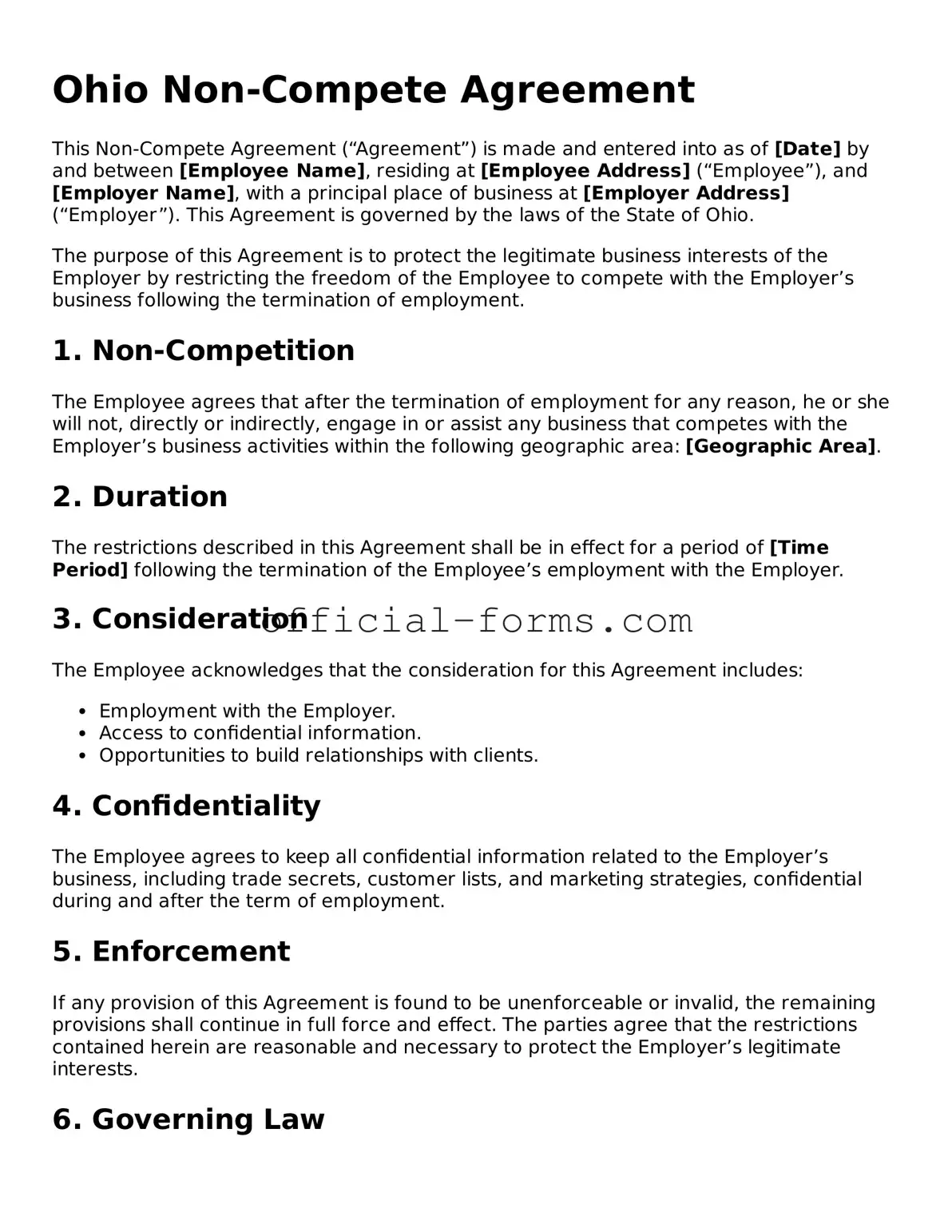Official Ohio Non-compete Agreement Document
A non-compete agreement is a legal contract that restricts an employee from working for competitors or starting a similar business for a specified period after leaving a job. In Ohio, these agreements are subject to specific guidelines to ensure they are fair and enforceable. Understanding the nuances of the Ohio non-compete agreement form can help both employers and employees navigate their rights and obligations effectively.
Open My Non-compete Agreement Now
